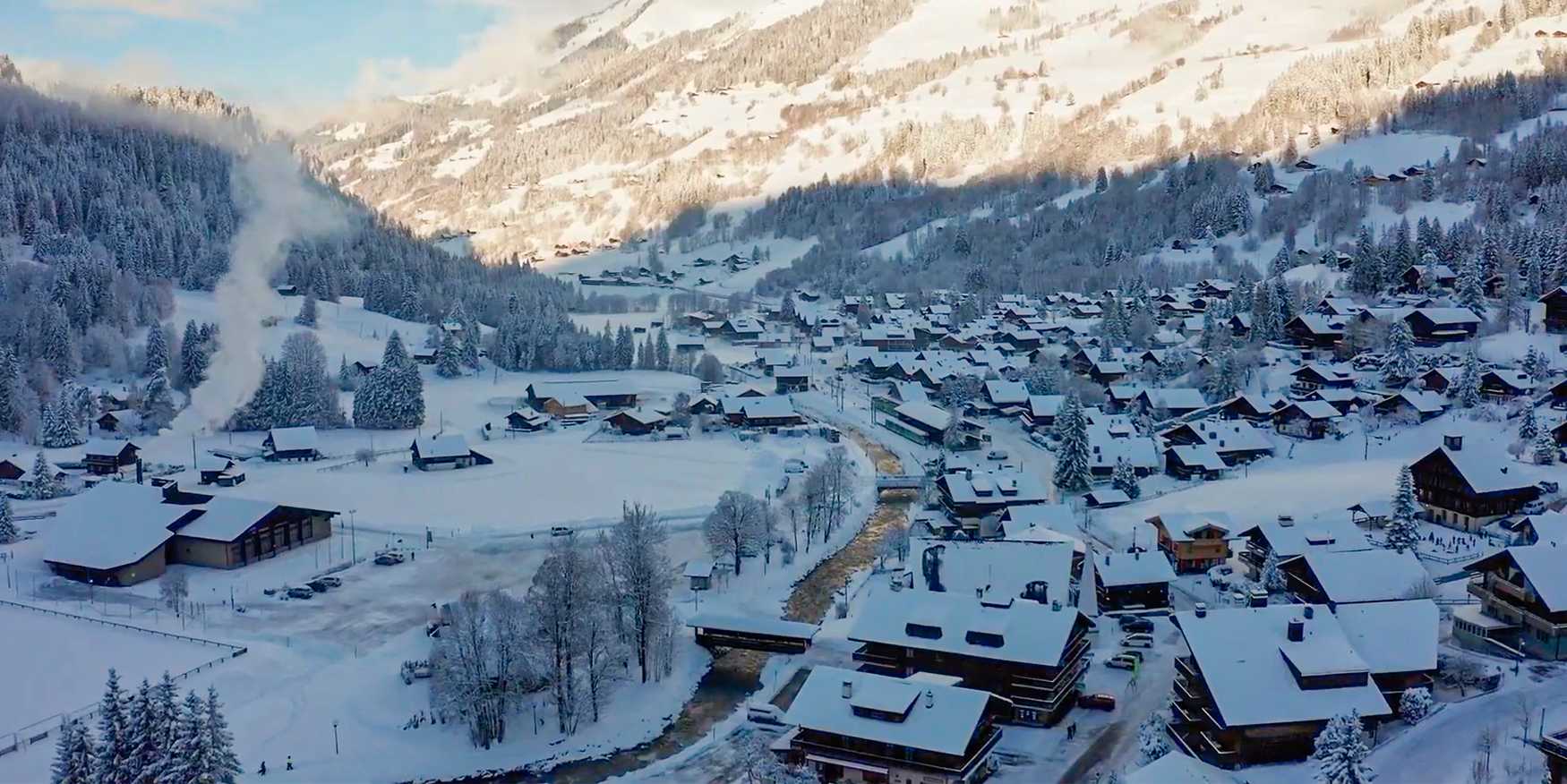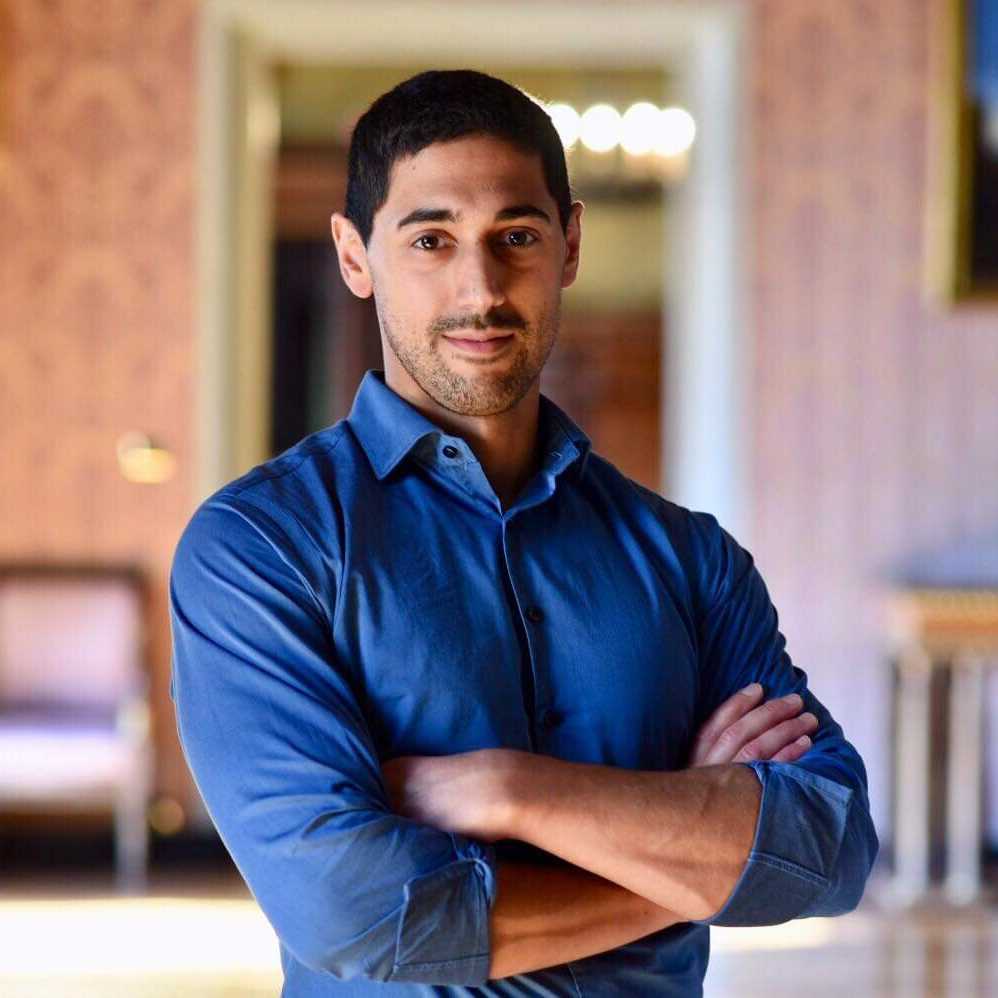Where physics and mathematics meet
Per Moosavi, a postdoctoral researcher in the Institute for Theoretical Physics at ETH Zurich, talks about what makes a good scientific workshop and what it takes to bring together different research communities.


When he joined ETH Zurich and the group of Professor Gian Michele Graf, Dr Per Moosavi became part of a National Centre of Competence in Research initiative known as external page "SwissMAP – The Mathematics of Physics". SwissMAP is an interdisciplinary research network, funded by the Swiss National Science Foundation, aimed at fostering the exchange of ideas and methods in theoretical physics and mathematics.
Moosavi's research in mathematical physics, with its focus on low-dimensional quantum many-body systems, is a natural fit for SwissMAP.
Earlier this year, Moosavi also visited the external page SwissMAP Research Station (SRS), a conference centre in the Vaud Alps that hosts international conferences and workshops at the crossing between mathematics and theoretical physics. We spoke with Per Moosavi about the SRS, his research plans and the ways to create bridges between different research areas.
How was the SRS as a setting for discussing research developments in your field?
I've known about the SRS for quite some time and was interested to visit the place, but then COVID-19 came. And even though there is a yearly winter school in mathematical physics at the SRS, it always collided with something else. This year, I finally managed to visit the Research Station – I went there three times, in fact. In the winter, I was invited to give a talk at a workshop, which was a great opportunity to meet new as well as old colleagues. During that workshop I received an invitation from a participant I'd just met to give a talk at another event organised at the SRS. While there, I also found out from a poster that there would be a summer workshop on a topic closely connected to my research, and so I decided to apply to attend it.
The Research Station hosts quite a wide range of workshops. I guess the universities that are part of SwissMAP wanted to have a place where its members can meet in person, although the events organised at the SRS aren't only for SwissMAP members – they obviously need to relate to the research program of SwissMAP, but that's wide-ranging too. My impression is that the number of activities at the SRS has increased recently. The schedule for this year looks busy, and people seem appreciative of the place and interested in organising events there.
Do you think there is something that sets apart the SRS with respect to other venues for scientific workshops?
The SRS offers a nice setting for workshops: the atmosphere is rather informal, and the programs are such that there is time for exchange and discussion among participants – this is unlike some workshops that can feel really packed. I have the impression that there is a conscious effort to avoid crammed programs.
Being in the mountains also helps to create a certain atmosphere. It's inspiring to not feel locked into a building and to be able to go out for a run, a hike or a ski tour surrounded by amazing nature, as is the case at the SRS.
Can you tell me a bit more about your research?
I study quantum many-body systems, and in particular systems of many interacting particles in lower dimensions – for example, one spatial and one temporal dimension or two spatial dimensions. I'm interested in finding analytical solutions for these low-dimensional quantum many-body systems when they are kicked out of equilibrium, that is, I try to understand from an analytical point of view how a system evolves following an external perturbation. Such analytical solutions are somewhat rare: you need to come up with a technique that leads to an exact solution, but naively cooking up a model for a given physical system becomes too complicated, in general, to tackle directly with analytical tools.
The process often starts with a system that models reality, and to this system you apply some approximations to obtain a new model that's still close enough to the original system but more accessible through analytical approaches. From there, I try to find an analytical solution without any more approximations. Of course, this isn't always possible and sometimes further approximations – like using a semi-classical method – are required.
Experiments on ultracold atoms simulate the type of system I study, and so my research is partly motivated by experimental physics. Quantum many-body systems can be studied with numerical models too. The interplay between these three approaches – experimental, numerical and analytical – is interesting in its own right: in the ideal case, you could try to compare them quantitatively.
Have you had a chance to collaborate with experimentalists?
I haven't directly collaborated with experimentalists yet, but I'm trying to go in that direction and have worked with people closely involved in experiments. Some of my coauthors work in a space that's somewhere between experiment and theory; my hope is to be able to collaborate more directly with experimentalists in the future.
That's one direction in which I'd like to expand my research. Another direction lies on the mathematical side, meaning that I'm looking into expanding my toolbox of mathematical techniques. I suppose they're rather opposite directions, but that's one thing that makes them interesting.
What are your thoughts on the collaboration between theoretical physicists and mathematicians?
I'd say that it takes some time to get to know each other and find a common ground – it isn't always easy to communicate, and some people are better at it than others. Some people are also not interested in this kind of collaboration, and that's fine too. There's a spectrum – it's a continuum really – that goes from being a pure mathematician to working as a pure physicist. I think I'm somewhere in the middle, which has its benefits as well as it occasional disadvantages.
To me, Professor Joel Lebowitz at Rutgers University in the USA is an inspirational figure when it comes to bridging disciplines: his main work is in statistical physics, but his research interests are broad. He's very appreciative of people coming from different backgrounds. A special achievement is the external page Statistical Mechanics Conference that Lebowitz has been running for over 60 years, which covers a really wide spectrum of research topics and still has an informal spirit. I attended one such conference as a PhD student, and I gave a five-minute talk there – this short-talk format is one thing for which Lebowitz's conferences are known. The Statistical Mechanics Conference connects different research communities; to me this is an inspiring concept. I think it's important to renew yourself and be open to new ideas in research.
You coauthored two papers published in external page SciPost Physics. What aspects did you consider when you decided to submit your work to this online journal, which puts forward a highly collaborative peer-reviewing practice within its open-access publishing model?
I'd say that the open-access aspect was one reason for submitting the first paper to SciPost Physics, and I was generally curious about its model. Looking back, I'm glad I got to be part of it in a small way. I also feel that the open referee reports encourage people to put in the effort when reviewing papers. SciPost Physics is also a really good journal in my field, so it made a lot of sense to submit there.